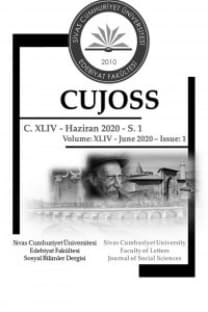Reaction Time as a Measure of Effects of Auditory Stimuli on Vision
Bu çalışma birbirlerinden farklı sesli uyarıcıların görsel bir hedefin yerini hiçbir sesli uyarıcının olmadığı durumdakine göre daha çabuk bulmaya yardımcı olup olmadıklarını bulmak amacını güdüyordu. Çalışma Deney 1 ve Deney 2 diye adlandırılan iki deneyden ibaretti. Deneklerin görevi bilgisayar ekranında düğmelerden biri üzerinde görünecek olan ve görsel hedef işlevi yapan A harfini bulmaktı. Deney 1’in denekleri hedef harfi bulmalarına yardımcı olabilecek herhangi bir sesli ipucu işitmediler fakat hedef harf diğer renksiz düğmeli harflerin aksine kırmızı düğme içinde belirdi. Deney 1 de deneklerin reaksiyon süreleri A harfinin renksiz gözüktüğündeki duruma kıyasla renkli düğme içinde gözüktüğünde daha hızlıydı. Deney 2’de denekler düğmeler dairesini görmeden hemen önce kısa bir melodi veya bir nota işittiler. Kısa melodinin Deney 2 deneklerinin ortalama tepki süresini kısalttığı bulundu. Tek notanın Deney 2 deneklerinin tepki sürelerini kısalttığını gösterecek deliller gözlenmedi.
Sesli Uyarımların Görme Üzerindeki Etkilerini İncelemek İçin Bir Ölçüt Olarak Reaksiyon Süresi
This study was intended to determine whether an auditory stimulus would help to locate a visual target faster than it could be located without any auditory stimulus. The study consisted of two experiments, named Experiment 1 and Experiment 2, consecutively. The participants’ task was to click on the button labeled with the letter ‘A’ that served as the visual target on the computer screen. The participants of Experiment 1 heard no auditory clue that could help to locate the target letter; but instead, they saw the letter ‘A’ appeared on a red-colored square among other colorless letters. The participants of Experiment 2 heard a short melody or a single note just before they saw the circle of buttons. In experiment 1, participants had faster reaction times in trials with color than in trials without color. In Experiment 2, possible target locations were associated with a melody or single notes. Whole melody was found to shorten the average reaction time of the participants of Experiment 2. Single notes did not seem to improve the reaction time of the participants of Experiment 2.
___
- BERTELSAN, Paul., & RADEAU, M. (1981), “Cross-modal bias and perceptual fusion with auditory- visual spatial discordance”, Perception & Psychophysics, 29, 578- 584.
- BERNSTEIN, Ira, H., CHU, Philip. K., BRIGGS, Patricia., & SCHURMAN, Donald. L. (1973), “Stimulus intensity and foreperiod effects in intersensory facilitation”, Quarterly Journal of Experimental Psychology, 25, 171-181.
- BERNSTEIN, Ira, H., CLARK, M. H.,& EDELSTEIN, Barry. A. (1969), “Effects of an auditory signal on visual reaction time.” Journal of Experimental Psychology, 80, 567-569.
- BERNSTEIN, Ira, H., CLARK, M. H.,& EDELSTEIN, Barry. A. (1969), “Intermodal effects in choice reaction time”, Journal of Experimental Psychology, 81, 405-407.
- BERNSTEIN, Ira, H.,& EDELSTEIN, Barry. A. (1971). “Effects of some variations in auditory input upon visual choice reaction time”, Journal of Experimental Psychology, 87, 241- 247
- BERTELSON, Paul. (1967), “The time course of preparation”, Quarterly Journal of Experimental Psychology. 18, 272-277.
- HERSHENSON, Maurice. (1962), “Reaction time as a measure of intersensory facilitation”, Journal of Experimental Psychology, 63, 289- 293.
- HILGARD, E. R. (1933), “Reinforcement and inhibition of eyelid reflexes”, Journal of Experımental Psychology: General 8, 85-113.
- NICKERSON, Raymond. S. (1973), “Intersensory facilitation of reaction time: Energy summation or preparation enhancement?”, Psychological Review, 80, 168-173.
- NISSEN, Mary. J. (1974), Facilitation and selection: Two modes of sensory interaction. Unpublished master’s thesis, University of Oregon.
- POSNER, Michael. I., NISSEN, Mary. J., & KLEIN, Raymond. M. (1976), “Visual dominance: An information- processing account of its origins and significance”, Psychological Review, 83, 157- 171.
- SIMON, J., Richard,& CRAFT. JOHN. L. (1970), “Effects of an irrelevant auditory stimulus on visual choice reaction time.” Journal of Experimental Psychology, 86, 272- 274.
- TEICHNER, W. H. (1954), “Recent studies of simple reaction time”, Psychological Bulletin, 51, 128- 149.
- TODD, J. W. (1912), “Reaction to multiple stimuli”, Arch. Psychology,3,25.
- VROOMEN, Jean, & DE GELDER, Beatrice. (2000), “Sound enhances visual perception: cross modal effects of auditory organization on vision”, Journal of Experimental Psychology: Human Perception and Performance, 26, 1583- 1590.
- WOODRAW, H. (1914), “The measurement of attention”, Psychological Monogram, 76, 17.
- ISSN: 1305-5143
- Yayın Aralığı: Yılda 2 Sayı
- Yayıncı: Sivas Cumhuriyet Üniversitesi Edebiyat Fakültesi
Sayıdaki Diğer Makaleler
Türkiye Türkçesinin Bugünkü Durumu ve Sorunları Üzerine Yazılan Kitaplar
Reaction Time as a Measure of Effects of Auditory Stimuli on Vision
Sosyolojik Suç Kuramlarının Suç Olgusunu Açıklama Potansiyelleri Üzerine Bir Değerlendirme
François Mauriac’in Therese Desqueyroux Romanında Suçluluk/Suçsuzluk Sorununa Bir Yaklaşım
Tarihin Sonu, İlerleme ve Küreselleşme Üzerine Bir İnceleme
Alain Robbe-Grillet’nin Ölümsüz Adlı Senaryo Romanında İstanbul ve Türk İmgesi
I. Dereceden Denklemlerin Yorumlanması: Eğitim Fakültesi 1. Sınıf Öğrencileri Üzerine Bir Çalışma
